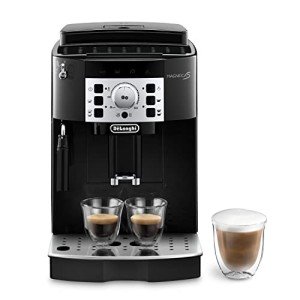Bean to Cup Espresso Machines: The Complete Guide
Worldwide of coffee enthusiasts, the bean to cup espresso machine represents the peak of a quality developing experience. It integrates the best coffee beans with sophisticated developing technology, allowing users to create café-quality espresso and coffee drinks from the convenience of their own kitchens. This short article explores the features, advantages, and drawbacks of bean to cup espresso machines, together with a choice of popular designs available in the market.
What is a Bean to Cup Espresso Machine?
A bean to cup espresso machine is an automatic coffee maker that incorporates the mill, brewing unit, and coffee delivery system into one unit. Unlike traditional espresso machines that require separate grinding equipment and may need manual brewing techniques, bean to cup machines grind, brew, and dispense coffee in mere minutes, making them easy to use and convenient.
Secret Features of Bean to Cup Espresso Machines
Here are vital functions that customers should consider when trying to find the ideal bean to cup espresso machine:
- Built-in Grinder: Freshly ground coffee is vital for a fantastic cup. Many bean to cup machines come with an incorporated grinder that permits users to select grind size and dosage.
- Personalized Brewing Options: Quality machines provide personalized settings for developing temperature level, coffee strength, and milk frothing capabilities, accommodating diverse tastes.
- User-Friendly Controls: Many machines feature intuitive touch screens or LCD displays for simple navigation between brewing choices.
- Automatic Milk Frothing: For those who enjoy coffees or lattes, some machines include automatic frothers, permitting for velvety and steamed milk at the touch of a button.
- Easy Cleaning and Maintenance: Cleaning mechanisms, such as detachable developing units and automatic cleansing cycles, are essential for preserving machine hygiene.
Benefits of Bean to Cup Espresso Machines
- Freshness: Since the machines grind coffee beans on need, consumers get the best coffee possible.
- Convenience: With a bean to cup machine, developing coffee becomes an uncomplicated procedure, requiring little bit more than the press of a button.
- Versatility: Many models use a variety of developing choices, from espresso to cappuccinos, making them versatile for every single coffee preference.
- Space-Saving Design: By incorporating numerous performances into a compact design, bean to cup machines conserve counter space.
- Consistency: Automated processes decrease human mistake, guaranteeing that every cup of coffee is regularly high quality.
Disadvantages of Bean to Cup Espresso Machines
In spite of their numerous benefits, bean to cup espresso machines do have some disadvantages:
- Cost: High-quality machines can be costly, providing a barrier for numerous possible buyers.
- Size: Some designs can be large, requiring sufficient counter space.
- Maintenance and Repairs: While lots of machines have self-cleaning functions, keeping them and fixing problems can be made complex and pricey.
- Restricted Customization: Compared to traditional espresso machines, users might discover less control over certain aspects of the developing process.
Popular Bean to Cup Espresso Machines
Here is a choice of popular bean to cup espresso machines presently available in the market:
| Brand & & Model | Grinder Type | Milk Frother | Price Range * | User Rating |
|---|---|---|---|---|
| De'Longhi Dinamica | Burr | Handbook | ₤ 1,200 - ₤ 1,500 | 4.5/ 5 |
| Jura E8 | Conical | Automatic | ₤ 2,200 - ₤ 2,600 | 4.7/ 5 |
| Saeco PicoBaristo | Ceramic | Automatic | ₤ 1,000 - ₤ 1,300 | 4.6/ 5 |
| Breville Oracle Touch | Dual Boiler | Automatic | ₤ 2,000 - ₤ 2,400 | 4.8/ 5 |
| Philips 3200 Series | Ceramic | Manual | ₤ 800 - ₤ 1,000 | 4.4/ 5 |
* Prices are approximate and differ by merchant.
Selecting the Right Bean to Cup Espresso Machine
When selecting the ideal bean to cup espresso machine, consumers need to think about a number of aspects:
- Budget: Determine how much you're willing to invest in a machine; this will help narrow down your options.
- Area: Measure your counter space to guarantee the selected model accommodates your kitchen area layout.
- Preferred Beverage Type: If you prefer milk-based drinks, look for models with automatic milk frothers.
- Maintenance Preferences: Decide how much time you're prepared to commit to cleansing and upkeep.
Frequently Asked Questions (FAQs)
Q1: Do I require any unique coffee beans for a bean to cup espresso machine?
A1: While you can utilize any whole coffee beans, medium to dark roast beans typically work best for espresso. Freshness matters, so select just recently roasted beans for ideal flavor.
Q2: Are bean to cup espresso machines simple to clean up?
A2: Many models include detachable parts and self-cleaning functions. However, routine maintenance, including descaling, is essential to keep the machine in leading shape.
Q3: Can I make other coffee drinks besides espresso with a bean to cup machine?
A3: Yes, a lot of bean to cup machines can brew different coffee drinks, including lattes, cappuccinos, and coffee shop au lait, thanks to their built-in brewing and frothing abilities.
Q4: How long do bean to cup machines usually last?
A4: With proper upkeep, quality bean to cup machines can last between 5 to 10 years, depending upon use and care.
Bean to cup espresso machines provide an excellent service for coffee lovers seeking quality, benefit, and flexibility in their developing process. While Fresh Coffee Machines may be considerable, the capability to enjoy freshly ground and brewed coffee at home frequently outweighs the expenses. Whether you're an espresso fanatic or simply starting your coffee journey, purchasing a bean to cup espresso machine can significantly boost your at-home coffee experience.

